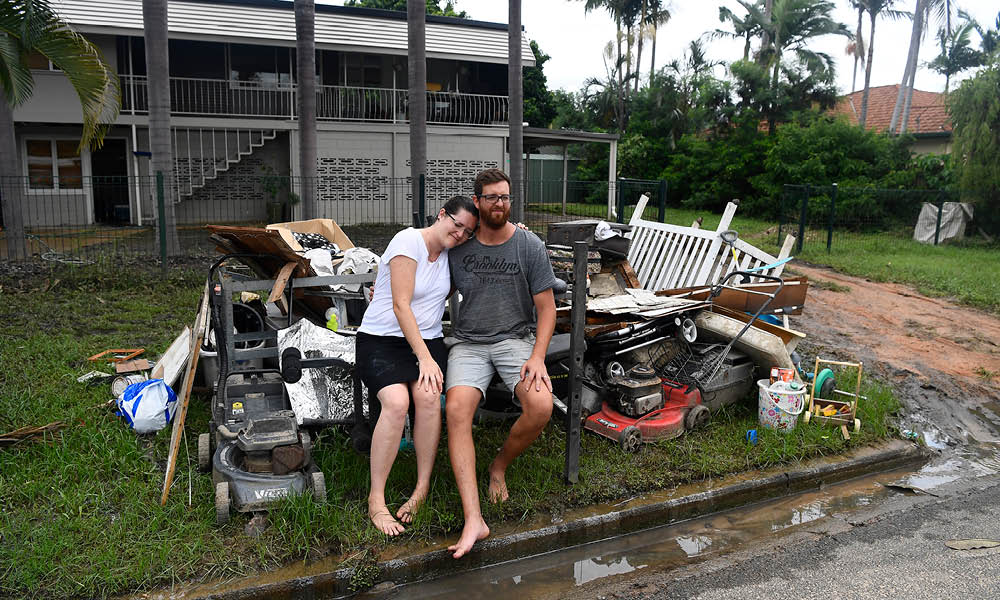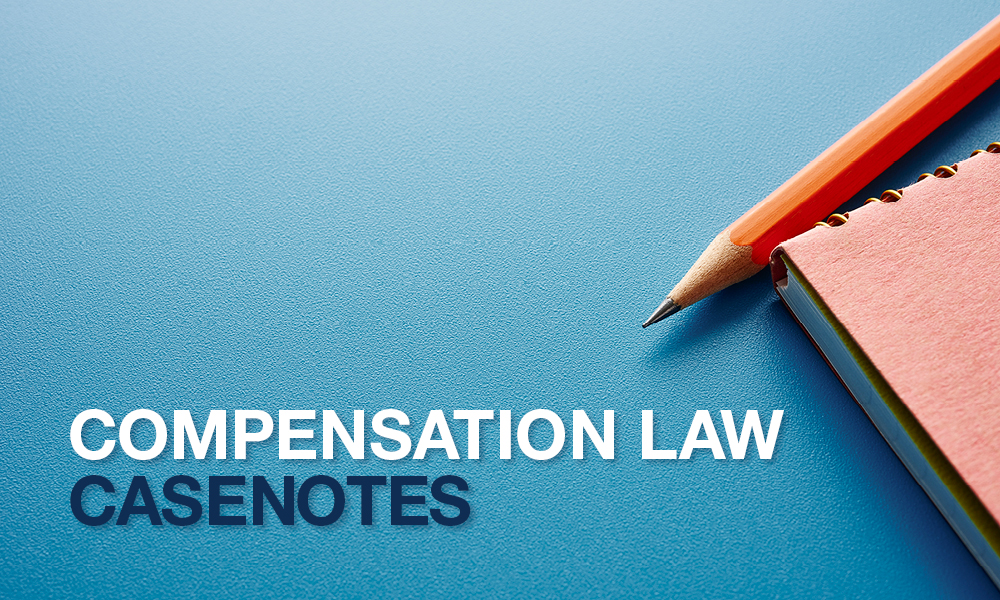In Royal and Sun Alliance Insurance Plc v DMS Maritime Pty Ltd [2019] QCA 264, the Court of Appeal considered whether an obligation to “promptly replace or otherwise make good” the loss of a vessel required the purchase of an alternative vessel or its equivalent, or could be met through a lease of an equivalent vessel for the remainder of a contractual service period.
The court also considered whether the quantum of an indemnity under a contract of insurance could be established by proof of the amount of a settlement, provided that the sum was reasonable in the circumstances.
Background
This case involved the loss of a naval vessel, and an insurance claim made in respect of that loss. The respondent, DMS Maritime (DMS), had contracted with the Commonwealth to design, construct and maintain a fleet of Armidale-class patrol boats. In 2014, while in the respondent’s possession and undergoing repairs, one of the boats was destroyed by a fire.
Under the contract between the respondent and the Commonwealth, the respondent was required to:
- indemnify the Commonwealth for “any loss or damage” to the vessel (cl.6.8.1.1), and
- “promptly replace or otherwise make good any loss of” the vessel (cl.8.3.1) (emphasis added).
The respondent and the Commonwealth reached a settlement that required the respondent to pay $31.5 million. That was the cost of replacing the lost vessel by the purchase of a new Cape-class patrol boat (which was roughly equivalent to the vessel lost).
The respondent then sought to recover the amounts paid under that settlement from its insurers. One of those insurers, Royal and Sun Alliance Insurance PLC (the appellant), initially contested its liability to indemnify.
However, the parties ultimately entered an indemnity settlement deed which, broadly speaking, conceded the insurer’s liability to pay. After a trial before Bond J, the appellant was ordered to pay the respondent $31.5 million under the relevant insurance contract (being the amount of the settlement sum paid by the respondent to the Commonwealth).
The appellant appealed from Bond J’s judgment, contending that his Honour had made a number of errors in assessing its liability to the respondent under their insurance contract.
The Court of Appeal (per Fraser and McMurdo JJA and Boddice J) dismissed the appeal entirely. In doing so, the court considered the meaning of an obligation to “replace or otherwise make good” a loss in a contract, and provided a useful demonstration of how quantification of indemnity under a contract of insurance may be established by proof of a reasonable settlement.
The insurance contract and appeal issues
The insurance policy provided that the respondent was to be indemnified:
“…for all sums which [the respondent] shall become liable to pay by reason of the legal liability of the respondent as ship repairers for…(i) loss of or damage to any vessel or craft which is in the care, custody or control of [the respondent] for the purpose of being worked upon…”
The central issues in the appeal involved two questions:
Firstly, how was the legal liability of the respondent to the Commonwealth (under clause 8.3.1, outlined above) properly to be understood? At first instance Bond J had concluded that it required either the provision of a replacement vessel or its equivalent (for example, in money).
However, the appellant contended that this construction was too narrow. On its proper construction, it suggested, the clause required no more than payment to the Commonwealth of its actual loss (that is, the monetary value of the vessel immediately prior to its destruction); and, further, that the loss could be “otherwise made good” through a lease of an equivalent or better vessel for the remainder of the lost vessel’s contractual service life. Requiring an actual replacement vessel, the appellant argued, would confer a benefit on the Commonwealth that would exceed the damage or loss it had sustained.
Secondly, was the respondent entitled to establish the quantum of its indemnity, under its insurance contract, by the amount it had settled with the Commonwealth on, provided it proved that amount as reasonable in the circumstances?
Bond J had considered that such proof would establish the requisite link between the amount paid and the amount the respondent was “liable to pay” the Commonwealth, as insured.
However, the appellant argued that “a settlement is not binding on the insurer unless the insured can demonstrate that, had the matter been litigated, the amount of the settlement would not have exceeded the amount of the judgment”.1 That was not the case here, it contended. Further, it submitted that proof of the quantum in this way had been excluded by a clause in the indemnity settlement deed.
Justice Boddice gave the lead judgment on appeal, with which Fraser and McMurdo JJA agreed. Fraser and McMurdo JJA also gave supplementary reasons for arriving at the same result.
The Court of Appeal judgment
Issue 1 – Meaning of “replace or otherwise make good”
Their Honours each upheld Bond J’s construction of clause 8.3.1, by which the respondent was required to “replace or otherwise make good” the loss to the Commonwealth.
Contrary to the appellant’s submissions, the obligation to “replace or otherwise make good” was not limited to meeting the Commonwealth’s actual loss (and was not in the nature of an award of damages). Instead, the clause required either the replacement of the vessel, or some other equivalent means of making good that loss (of the vessel).
As Boddice J observed, there was a link between the concepts of ‘replace’ and ‘make good’, which precluded the latter expression from being satisfied through the provision of an amount which reflected the actual pecuniary loss alone.2
Although this had the result that the Commonwealth may be placed in a better position – that is, by having a new boat in place of the old (or its monetary equivalent) – their Honours considered that the contract clearly contemplated that result. It would have been apparent to the parties at the time of contracting that replacement with an equivalent vessel of the same age and condition would not be possible.
Further, the alternative means suggested for making good the loss – that is, through provision of a leased vessel for the remainder of the contracted service period – would not provide an equivalent making good of the loss. That was because the Commonwealth would not retain ownership of a vessel after the end of the leasing period.
Issue 2 – Proof of loss and reasonableness of settlement
The court unanimously concluded that the indemnity settlement deed had not excluded proof of a reasonable settlement as a means of establishing the quantum of the insured amount.
While the deed had indicated that the settlement amount was not determinative of the indemnity, it did not displace the insurance policy, which was subject to the recognised principle that an obligation to indemnify a legal liability may encompass the reasonable compromise of a legal proceeding.3
McMurdo JA, in particular, noted the divergent authorities concerning this principle. For example, the appellant argued that the respondent was required to prove that the amount of the settlement was less than what would have been obtained had the matter been litigated. However, McMurdo JA considered that the primary judge’s approach was supported by Queensland appellate authority (with the only requirement being proof that the settlement amount was reasonable).4
In any event, it was not necessary to consider the correctness of this approach because the settlement sum was less than the amount that would have been awarded after a trial. This was because the settlement sum was only the “bare replacement” cost of a roughly equivalent vessel. To make the replacement functionally equivalent to the lost vessel would have required an award “well above $31.5 million”.
Implications and takeaways
This decision is a useful reminder of how parties may be led astray if they understand the indemnity recoverable under a contract of insurance independently of the particular obligation of the insured which is indemnified.
In this case, the insured obligation of the respondent was to provide a replacement, or otherwise (equivalently) make good the loss of the vessel. The insurer had agreed to indemnify the respondent for that legal liability.
That resulted in an outcome that may confer some betterment on the Commonwealth, but that was simply a matter of giving effect to the obligation agreed at the time of contracting. Accordingly, the insurer’s obligation was not satisfied by an amount that would reflect only the actual loss, or what might be arrived at for an award of damages.
Further, the decision provides an illustration of how proof of a reasonable settlement may establish the quantum of indemnity under a contract of insurance. The reasons of McMurdo JA (in particular) and Boddice J (less obviously),5 seem to support the continued authority of the earlier decision in Hurlock6, to the effect that all that is required is proof that the settlement is reasonable (and not the stricter test that the amount settled on is less than what would have been achieved through a trial).
William Isdale is a lawyer at MinterEllison. Samuel Walpole is a legal officer at the Australian Law Reform Commission and a sessional lecturer at the University of Queensland. The views expressed in this article represent solely the personal views of the authors.
Footnote:
1 Relying on Colinvaux’s Law of Insurance (11th ed.) at 21-107.
2 Thus, the fact that the market value of the vessel was nil was irrelevant, as was the fact that the Navy obtained the use of an Australian Border Force vessel for two years and a leased vessel for three years after that.
3 See, for example, Unity Insurance Brokers Pty Ltd v Rocco Pezzano Pty Ltd (1998) 192 CLR 603 at 626.
4 Hurlock v Council of the Shire of Johnstone [2002] QCA 256.
5 Fraser JA did not expressly address this second issue, but agreed with the reasons of both McMurdo JA and Boddice J.
6 See note 4, above.
This story was originally published in Proctor May 2020.















Share this article